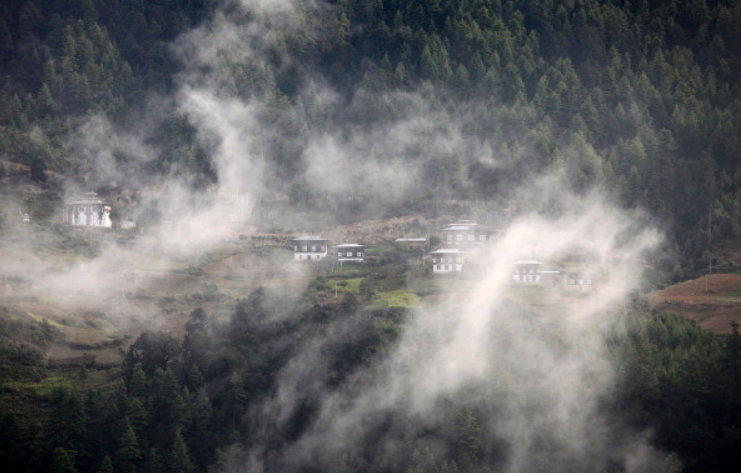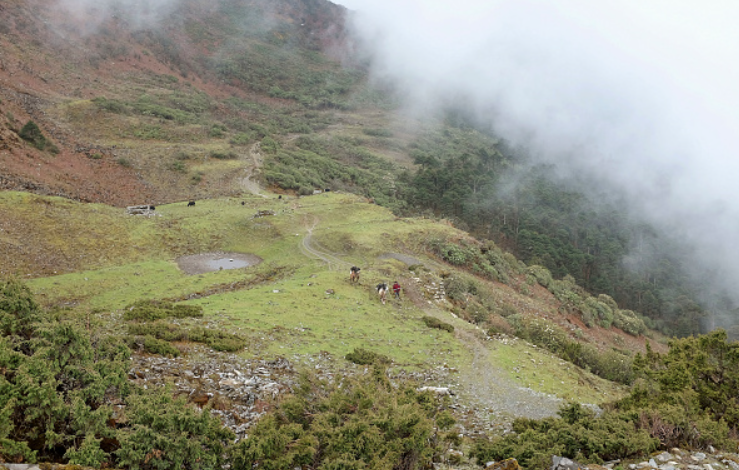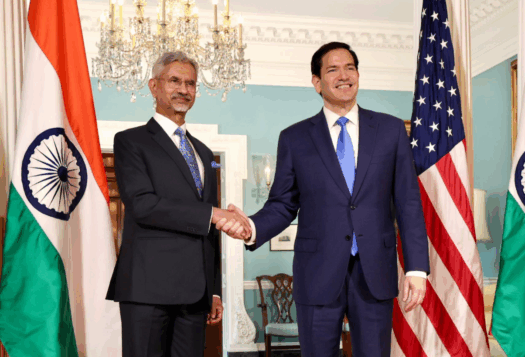
In early April 2021, the 10th Expert Group Meeting, a joint Sino-Bhutanese delegation which includes Bhutan’s Ambassador to India, Major General Vetsop Namgyel, met in Kunming, China. Their goal: to lay the groundwork for the 25th round of negotiations later this year on the contested Sino-Bhutanese frontier. Described in the Global Times as having a “warm and friendly atmosphere”, behind the diplomatic pleasantries and photo opportunities presented by this meeting however lies a simmering border dispute, with implications for all of South Asia. Beijing is altering the territorial status quo in Bhutan, and there is little Thimphu can do to oppose it.
The border between Bhutan and China spans 477 kilometers through some of the most remote and hostile terrain on the planet. Amid heavily forested ravines and ice-capped mountain summits, consensus on its precise location has been hard to reach and harder still to enforce. Ethnic Tibetan herdsmen routinely cross into Bhutan and, on numerous occasions, so have People’s Liberation Army (PLA) patrols. In September 2020, during the Sino-Indian standoff at Pangong Tso, the PLA was seen to be more aggressively patrolling near the Pasamlung Valley and preventing the Royal Bhutanese Army from entering Dermalung, regions located in the sparsely populated north and claimed by Beijing.
The border dispute has a long history and is one of China’s last remaining land disputes alongside the tensions with India. Between 1984 and 2016, 24 rounds of talks between Bhutan and China were conducted despite lacking formal diplomatic ties. The 25th round has been delayed for almost five years, first by the 2017 Doklam standoff, and more recently, by the COVID-19 pandemic. During this period, Beijing has become increasingly aggressive in its conduct towards Bhutan, laying fresh claim to swathes of land such as Sakteng, constructing new villages on Bhutanese territory such as Pangda at Doklam or Gyalaphug in Pasamlung, and reinforcing the border near Doklam with dual-use infrastructure and military hardware. The aim is to secure a strategic advantage over India at the expense of Bhutan’s territorial integrity.
The Changing Status Quo in Bhutan
Robert Barnett and his team of researchers have brought widespread attention to Beijing’s recent moves in the Himalayas and highlighted the scale of the challenge now facing Bhutan. Historically, Beijing has claimed over 760 square kilometers within Bhutan. This includes Sinchulung, Dramana, Shakhatoe, and Doklam in the west near the India-China-Bhutan tri-juncture, and the Jakarlung and Pasamlung Valleys, located north near the Tibet Administrative Region (TAR).
[Beijing’s] aim is to secure a strategic advantage over India at the expense of Bhutan’s territorial integrity.
Since 2014, satellite images from Maxar Technologies/Google Earth reveal that China has been steadily reinforcing its infrastructure along the TAR’s border with Bhutan, Nepal and India, constructing 600 new villages within Tibet as well as highways and railway lines. Barnett’s investigation, however, has revealed the existence of a large Chinese village, identified by its Tibetan name of Gyalaphug. The village is similar in scope to Pangda near Doklam located within the contested Pasamlung Valley. Known to the Bhutanese as Beyul Khenpajong, the area is of enormous cultural and religious significance to both Bhutanese and Tibetan Buddhists. The investigation further reveals Gyalaphug is not simply an isolated village. Rather, it sits within a network of projects, including a small hydropower station, two Chinese Communist Party administrative centers, and five police outposts. This, alongside a similar enclave reportedly under construction in the Menchuma Valley, represents a low-level annexation by China in territory internationally recognized as belonging to Bhutan. Beijing meanwhile contends that Gyalaphug is administratively part of Lhodrak in the TAR, as per comments by Wu Yingjie, the CCP Party Secretary of Tibet.
Along with renewed pressure in the north, Beijing has also upped the ante for Bhutan in the east. In June 2020, at the 58th meeting of the Council of the Global Environment Facility (GEF), China’s delegation unexpectedly objected to grant assistance for the Sakteng Wildlife Sanctuary, claiming this region lies within Chinese territory. This sudden announcement amounts to an additional 740 square kilometers of Bhutanese territory claimed by Beijing in a highly sensitive region, given it borders the Indian state of Arunachal Pradesh. As Bhutanese journalist, Tenzing Lamsang highlights, Sakteng is an entirely new claim and represents a deliberate escalation in Sino-Bhutanese border tensions. Maps produced by the Chinese Communist Party in 2014 and even those dating back to 1977 have not previously featured Sakteng, nor has eastern Bhutan been a subject of discussion in the 24 rounds of prior border talks or when Vice-Foreign Minister Kong Xuanyou visited Bhutan in 2018. Beijing’s sudden claim to Sakteng becomes clear when placed in a wider context, however.

China’s Objectives at Doklam and Sakteng
Territorial claims in northern and eastern Bhutan come amid continued movements by the PLA near Doklam in the years since the standoff was supposedly concluded in 2017. Unconfirmed reports suggest PLA units from the Tibetan Military District, remain to this day and between August 13-14, 2020 were sighted warning Bhutanese herders away from the Raja Rani Lake. Owing to the region’s remoteness and the Bhutanese government’s overt silence, the information coming from Doklam is very limited. What we do know, courtesy of open access sources and satellite images, is that since 2018 the PLA has constructed new roads, fighting positions, helicopter landing pads and a communications tower on Doklam, in territory recognised as belonging to Bhutan. Possible ammunition storage bunkers and surface to air missile batteries have also been sighted on the Chinese side of the tri-juncture alongside villages and accommodation for patrols increasing Beijing’s reach further.
China’s encroachments at Doklam, Pasamlung and Sakteng can no longer be claimed as isolated incursions so often attributed to aggressive local commanders or “wolf warrior” diplomats. Rather, there is a deliberate pattern developing that indicates an increasing willingness to pressure Bhutan to concede border territory, specifically territory politically and militarily sensitive to India.
Although little is known about China’s internal decision-making processes, as Linda Jakobsen has highlighted in the context of the South China Sea, we can gain an insight into Beijing’s ambitions in Bhutan via the controversial border package put forward for Thimphu’s consideration in 1996. In this deal, China agreed to renounce its claims in northern Bhutan at the Pasamlung and Jakarlung Valleys. In return, Bhutan would concede Doklam, Sinchulung, Dramana, and Shakhatoe in the west. In terms of territory to be exchanged, China would gain just 100 square kilometers at Doklam while renouncing its claim to the 495 square kilometers in the north and a 269 square kilometer sector in the west. This seemingly continues a trend of Beijing offering substantial concessions to resolve land border disputes. Bhutan came close to signing this agreement in 2001 but rejected it due to pressure from New Delhi. India views Chinese control of the plateau as a security threat given its proximity to Sikkim, the Chumbi Valley, and the Siliguri Corridor. Amid concerns over Chinese intentions at Doklam, New Delhi made Bhutan sign a treaty in 2007 that ensured Thimphu respected Indian security concerns. A decade later, it deployed troops to Doklam to prevent PLA engineering works from turning into a permanent foothold.
An additional 50,000 Indian troops now being deployed to the LAC this summer and given the poor state of Sino-Indian relations post-Ladakh, this represents a dangerous moment for Bhutan, which risks being drawn against its own volition into the rising great power tensions within the Himalayas.
Beijing’s aggressive moves into Bhutan in the last decade thus suggest the following. First, controlling the Doklam plateau remains China’s primary objective, as demonstrated by the PLA’s intensified activity in the region. Second, there is a deliberate campaign underway by China to hold territory such as Pasamlung to force Thimphu towards a version of the agreement outlined in 1996, with the likely ambition that Beijing returns the land currently occupied following an agreement that cedes Doklam. Finally, China’s claims on Sakteng and Doklam, and their proximity to sensitive regions of India, reveal that Beijing views its territorial claims in Bhutan through the prism of wider strategic competition with New Delhi. Thimphu meanwhile risks becoming increasingly collateral in the tense contest for pre-eminence in the Himalayas. That Beijing signed a treaty with Bhutan in 1998 vowing “not to resort to unilateral action to alter the status quo of the border” is now an inconvenient footnote that China and the PLA have willingly overlooked in order to keep India looking north.
With an additional 50,000 Indian troops now being deployed to the LAC this summer and given the poor state of Sino-Indian relations post-Ladakh, this represents a dangerous moment for Bhutan, which risks being drawn against its own volition into the rising great power tensions within the Himalayas. China’s low-level campaign of eroding Bhutanese territorial integrity, seeking gains that alter the strategic balance in the Himalayas to New Delhi’s disadvantage. In doing so it erodes Bhutan’s trust in India’s legitimacy as a security guarantor and is as brazen a policy as the one being pursued in Ladakh.
Doklam 2.0?
New Delhi has had an outsized level of influence in Bhutan’s internal affairs due to the 1949 Treaty of Friendship. Despite a loosening of controls over Thimphu’s foreign and defense policy in 2007, under Narendra Modi’s administration, Indian military officials and the right-wing of the Bharatiya Janata Party (BJP) have prioritized keeping Bhutan within New Delhi’s embrace. As China’s influence has risen in neighboring Nepal, even minor inroads made by Beijing into Bhutan, such as increasing tourist numbers or medical assistance for COVID-19, have been met with concern among Indian policymakers, fearing a further loss of influence. Further changes to the territorial status quo in Bhutan, in the light of recent revelations, would likely constitute a red line for New Delhi, especially in the context of the claims to Sakteng and its proximity to Arunachal Pradesh.
Should it transpire in the coming years that Chinese villages or roads are being constructed in Sakteng, alongside those on the Qinghai-Tibet Plateau, it is conceivable that Indian mountain troops from IV Corps would intervene as at Doklam in 2017, thus placing Bhutan at the center of a future Sino-Indian standoff. Even if such a standoff does not occur, Beijing is already in the process of changing the territorial status quo in violation of the Sino-Bhutanese agreement of 1998. Given the substantial pressure from India to prevent a border deal that yields Doklam, it is highly unlikely that there will be a significant breakthrough between Thimphu and Beijing and certainly not one that reverses the incursion at Pasamlung. Thus, in the very near future, Bhutan faces a border crisis with China that may already be underway.
Editor’s Note: A version of this piece originally appeared on 9DashLine and has been republished with permission from the editors.
***
Image 1: Ed Jones/AFP via Getty Images


